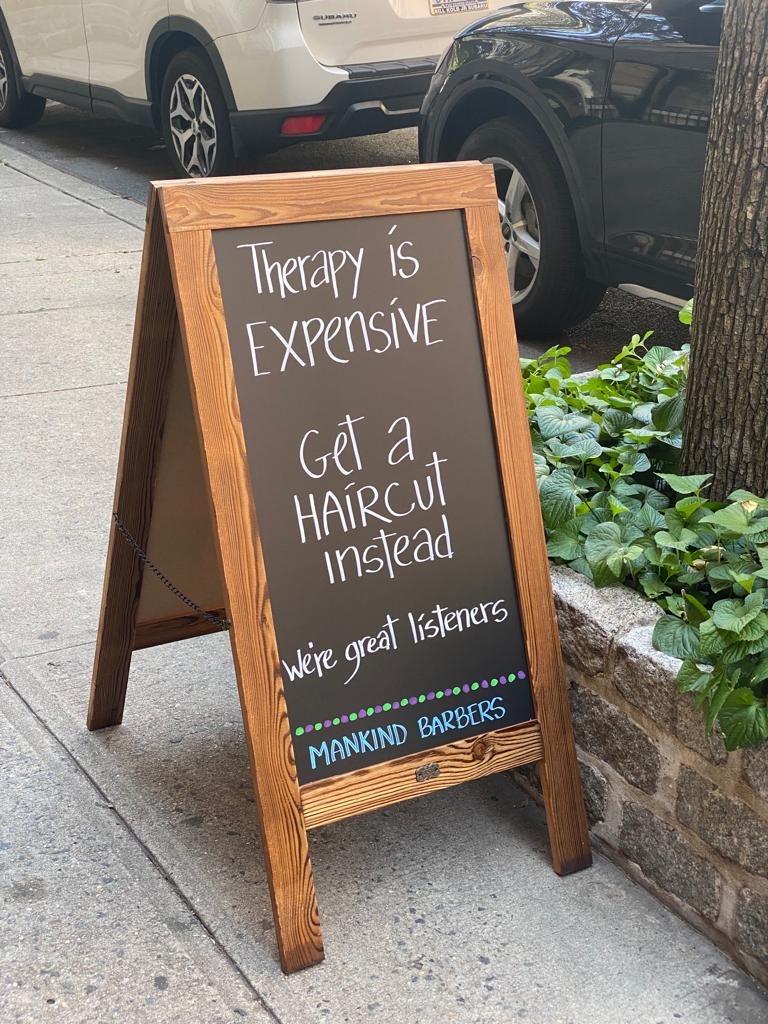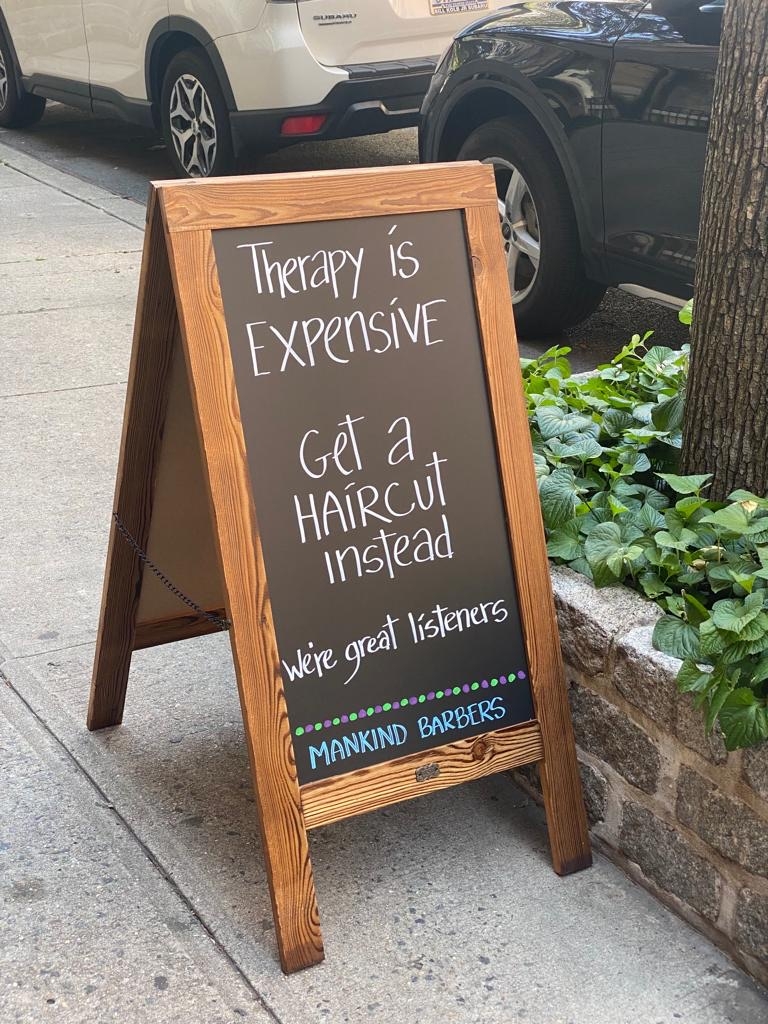

Neck dusters should be cleaned regularly to prevent the buildup of hair and debris, ideally after each use or at least daily in a salon or barbershop setting. This frequent cleaning helps maintain hygiene standards and ensures that the duster remains effective in removing hair clippings without transferring dirt or bacteria onto the skin.
Neck dusters are typically made from materials such as nylon, horsehair, or synthetic fibers. The type of material used can affect the duster's performance, with softer materials like horsehair being gentler on the skin and providing a more comfortable experience. Nylon and synthetic fibers, on the other hand, may be more durable and easier to clean, but they can be harsher on sensitive skin.
Understanding curl pattern and hair type has become hot topic and for good reason – being able to advise clients on their hair allows them to unlock its potential. Below, Boucléme founder and curl specialist, Michele Scott-Lynch, gives a four-step guide to curl type… Step One: Curl Type Identifying the curl type is much easier The post Understanding Your Client’s Hair Type appeared first on Modern Barber.
Posted by on 2024-03-19
The Fashion Retail Academy (FRA) announces that it has acquired the capital’s leading beauty school, the London College of Beauty Therapy (LCBT). As a successful education charity, having trained over 13,000 students for entry-level roles in fashion and retail since 2005, the FRA’s acquisition of LCBT marks a significant expansion of its commitment to provide industry-backed vocational The post Fashion Retail Academy Acquires the London College of Beauty Therapy appeared first on Modern Barber.
Posted by on 2024-03-19
The Lions Barber Collective has been at the forefront of championing mental health within the hair and barbering industry since 2015 and now its asking you to join the pride and volunteer at events across the UK. It recognises the unique role barbers and hairdressers play as trusted confidants for their clients. By fostering a safe The post Join the Pride: Volunteer for Lions Barber Collective Mental Health Charity appeared first on Modern Barber.

Posted by on 2024-03-19
Modern Barber caught up with local high street barber, Carlo DePetrillo, to get his insight after 40 years in the business. From the need for regulation to the importance of creating a community, it was an eye opening chat on how far the industry has come, and the recent changes we’ve seen due to the The post The High Street Barber: Carlo DePetrillo appeared first on Modern Barber.

Posted by on 2024-03-19
Neck dusters can generally be used on sensitive skin without causing irritation or discomfort, especially if they are made from softer materials like horsehair. However, it is important to use gentle strokes and avoid applying too much pressure to prevent any potential irritation. If a client has particularly sensitive skin, it may be advisable to test the duster on a small area first to ensure compatibility.

To effectively remove hair clippings using a neck duster, it is recommended to use quick, light strokes in a downward motion. Start from the top of the neck and work your way down, ensuring that all hair clippings are swept away. It is also helpful to hold a towel or cape around the neck to catch any stray hairs and prevent them from falling onto the skin.
The benefits of using a neck duster include quick and efficient removal of hair clippings from the neck area, which helps keep the client comfortable and clean during and after a haircut. Neck dusters are also easy to use and maintain, making them a convenient tool for stylists and barbers. Additionally, using a neck duster can help create a more professional and polished look for the client.

When using neck dusters on different hair types or textures, it is important to consider the density and length of the hair. Thicker or longer hair may require more passes with the duster to ensure thorough removal of clippings. Additionally, curly or coarse hair may trap more debris, so extra care should be taken to clean the duster regularly to prevent buildup.
To properly sanitize neck dusters and maintain hygiene standards in a salon or barbershop setting, it is recommended to wash them with warm, soapy water after each use. Allow the duster to air dry completely before storing it in a clean, dry area. Additionally, consider using a disinfectant spray or wipes to sanitize the duster between clients, especially if it comes into contact with broken skin or sensitive areas. Regularly inspect the duster for any signs of wear or damage and replace it as needed to ensure optimal performance and cleanliness.

To prevent razor bumps and ingrown hairs when shaving with a straight razor, it is important to follow a proper shaving routine. Begin by preparing the skin with a pre-shave oil or cream to soften the hair and lubricate the skin. Use a high-quality shaving brush to create a rich lather with a shaving soap or cream. Ensure the straight razor is sharp and properly maintained to prevent tugging on the hair. Shave with the grain of the hair to reduce irritation and avoid going over the same area multiple times. After shaving, rinse the skin with cold water to close the pores and apply an alcohol-free aftershave to soothe and hydrate the skin. Consistent exfoliation and moisturizing can also help prevent ingrown hairs.
Moustache wax and beard balm are both grooming products designed for facial hair maintenance, but they serve slightly different purposes. Moustache wax is typically used to style and shape the moustache, providing hold and control to keep stray hairs in place. It often has a thicker consistency and a stronger hold compared to beard balm. On the other hand, beard balm is more commonly used to condition and nourish the beard, providing hydration and softening the hair. It usually contains ingredients like shea butter, beeswax, and essential oils to promote healthy growth and manageability. While both products can help improve the overall appearance of facial hair, moustache wax is more focused on styling, while beard balm is more focused on conditioning.
When it comes to cleaning clipper blades, the best type of brush to use is a specifically designed clipper blade brush. These brushes are typically small and have stiff bristles that are perfect for removing hair and debris from between the blades. Some clipper blade brushes even come with a small pointed end that can be used to reach tight spaces. It is important to use a brush that is made for clipper blades to ensure that the blades are cleaned thoroughly and effectively. Additionally, using a brush with antimicrobial properties can help prevent the growth of bacteria on the blades. Overall, investing in a high-quality clipper blade brush is essential for maintaining the performance and longevity of your clippers.
Open and closed comb safety razors differ in their design and functionality. Open comb razors have teeth along the edge of the blade, allowing for more aggressive shaving by allowing more hair to come into contact with the blade. This design is ideal for individuals with thick or coarse hair. On the other hand, closed comb razors have a solid safety bar that covers the blade, providing a milder and more controlled shaving experience. Closed comb razors are better suited for individuals with sensitive skin or those who prefer a less aggressive shave. Both types of razors have their own advantages and it ultimately comes down to personal preference and shaving needs.
Properly storing barber scissors is essential to prevent damage and maintain their sharpness. To ensure longevity, it is recommended to store the scissors in a protective case or pouch when not in use. Avoid storing them in humid or damp environments, as this can lead to rust and corrosion. Additionally, storing the scissors in a cool, dry place away from direct sunlight can help prevent any potential damage. It is also important to regularly clean and oil the scissors to keep them in optimal condition. By following these storage guidelines, barbers can prolong the lifespan of their scissors and ensure they remain in top working condition for years to come.